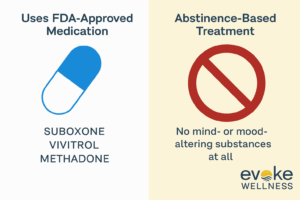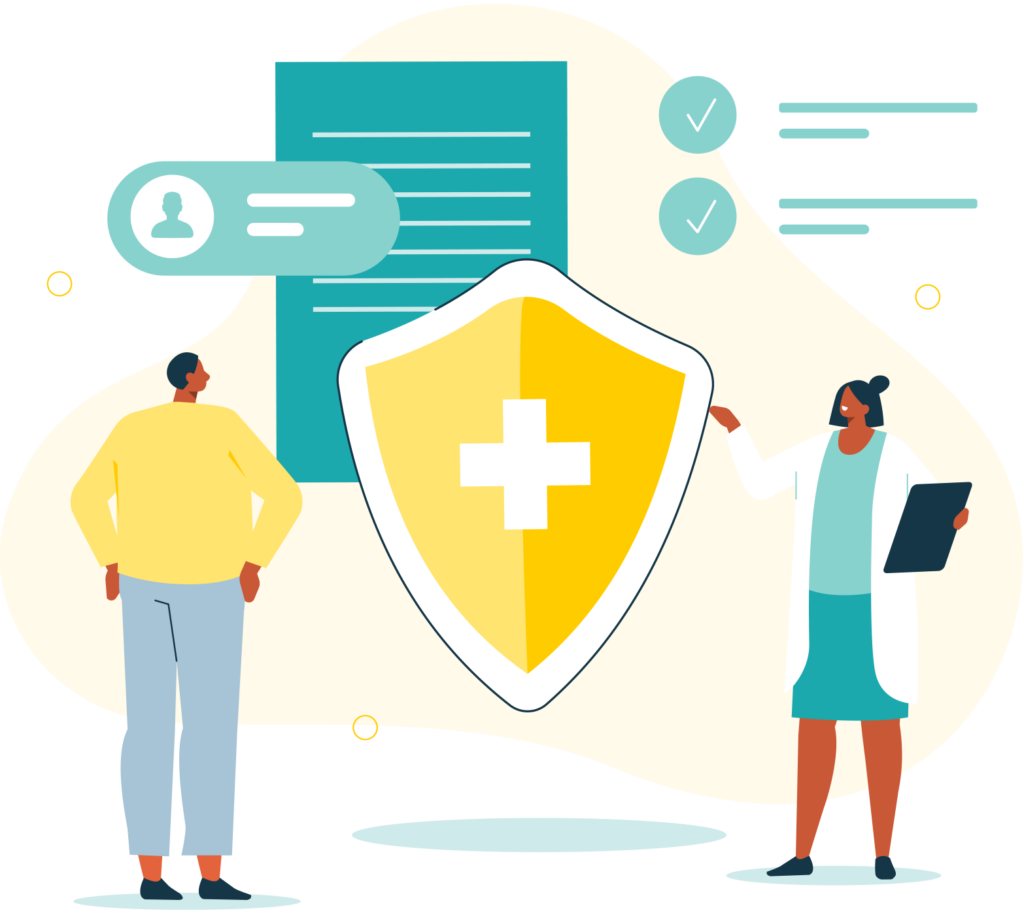I didn’t plan to relapse. It wasn’t some big crash—I didn’t lose my job, or wind up in the hospital, or get arrested. I just… slipped.
It started small. I skipped a meeting. I ignored a text. I told myself I was fine.
Ninety days sober. And then I wasn’t.
The shame hit hard. Not just because I’d used again—but because I didn’t know how to come back. I didn’t want to go through the same routine, the same expectations. I started wondering: What if I need something different this time?
That’s when I started asking questions I never had the courage to ask before. Like—what’s the real difference between MAT and abstinence-only treatment? Could I choose a new path without feeling like a failure?
If you’re reading this with that same mix of defeat and quiet hope, I want you to know this: there is no one “right” way to do recovery. And choosing what’s best for you—even if it’s not what you chose last time—is one of the strongest things you can do.
What Is MAT (Medication-Assisted Treatment)?
Medication-Assisted Treatment, or MAT, involves using FDA-approved medications—like Suboxone, Vivitrol, or methadone—alongside therapy and recovery support. The goal is not to numb you. It’s to stabilize you.
Cravings and withdrawal symptoms can hijack your ability to function. MAT helps soften the intensity, so you can actually focus on rebuilding your life.
At Evoke Wellness Ohio, MAT is offered with medical oversight, emotional support, and full respect for your autonomy. It’s not a “lesser” option—it’s a legitimate, evidence-based treatment model that’s helped many people find lasting recovery after relapse.
What Does Abstinence-Only Mean?
Abstinence-based treatment means no mood- or mind-altering substances at all—including medications used in MAT. This approach is common in 12-step programs and many traditional residential rehabs.
Some people find deep spiritual grounding in abstinence. Others prefer the clarity it gives them—free from any substances, period.
For me, abstinence worked the first time. Until it didn’t. That didn’t make it bad. It just meant I needed to reconsider what was sustainable for me—not for a checklist.
There’s No “Better” Path—Just the One That Works for You
You don’t have to prove anything by suffering more. The point of recovery isn’t to white-knuckle your way through cravings or push past panic to meet some unspoken standard.
It’s about healing. It’s about safety. It’s about reclaiming your mind, your body, and your sense of self.
If you’re unsure which path fits now, talk with someone who can walk through both with you. At Evoke Wellness Ohio in Hilliard, our team understands both models—and we’ll support whatever makes you feel safe enough to begin again.
When You’re Coming Back After a Relapse
This is the part no one talks about enough: how heavy shame can get when you relapse after “doing well.”
You might hear your own voice saying:
- I should have known better.
- I already got the help—why couldn’t I hold on?
- Everyone’s going to be disappointed in me.
I thought all of those things. And then I realized something important:
I didn’t lose what I learned. I didn’t forget how to stay sober. I just needed more support.
And there’s nothing weak or broken about that.
A New Path Doesn’t Mean You Failed the Old One
I used to think switching from abstinence to MAT meant I had failed somehow. That I was “doing recovery wrong.”
But the truth is, the longer you’re in recovery, the more you learn what helps you stay well. Sometimes that means sticking to what worked. Other times, it means adapting.
Recovery isn’t a performance. It’s a process. And if your process includes medication this time, that’s not defeat. That’s wisdom.
You Deserve Help That Feels Safe—Not Punishing
If you’re afraid to walk back through the doors of treatment because you think people will judge your relapse—or your treatment choice—you’re not alone. A lot of us carry that fear.
But real recovery spaces don’t shame people for trying again. And at Evoke Wellness Ohio, that’s something we take seriously.
Whether you want to return to abstinence-based treatment, try MAT, or just talk through both—there’s no script you have to follow. We’ll meet you where you are, not where someone else thinks you should be.
What Alumni Say After Choosing MAT
“After my second relapse, I decided to try MAT. I still go to meetings. I still do the work. But now I can breathe.”
– Alumni, 2023
“I didn’t switch because I gave up. I switched because I wanted to stay alive. And MAT gave me the space to heal at a slower, safer pace.”
– Client, 2024
“I wish I’d known sooner that I had options.”
– Relapsed Alumni, 2022
FAQs About MAT vs Abstinence-Only Drug Addiction Treatment
Can I combine MAT with therapy or 12-step meetings?
Yes. MAT is most effective when paired with counseling and support. Many people use both medication and peer-based programs like NA or AA. It’s about what supports your recovery—not what anyone else thinks it should look like.
Will people judge me for using medication?
Some might. But the right people won’t. And at Evoke Wellness Ohio, no one will. Your path is yours—and there’s no shame in choosing the tools that help you stay well.
What medications are used in MAT?
Common options include Suboxone (buprenorphine + naloxone), Vivitrol (naltrexone), and methadone. Each has different benefits depending on your history, use patterns, and treatment goals.
Is MAT forever?
Not necessarily. Some people use it short-term. Others use it long-term. The timeline is personal—and it can always be revisited with your provider.
Is abstinence-only better for some people?
Yes. Some people find deep strength in abstinence, and it works beautifully for them. Others don’t. It’s not about comparison—it’s about fit.
Call (866)430-9267 or visit evokewellnessoh.com to talk about drug addiction treatment options in Hilliard, Ohio—whether that means MAT, abstinence, or simply exploring what’s next. You haven’t failed. You’re just finding your way forward.



